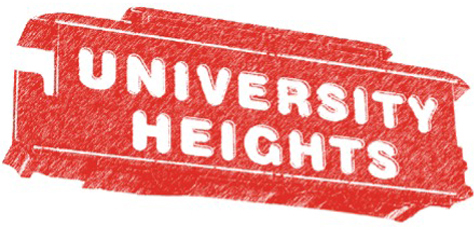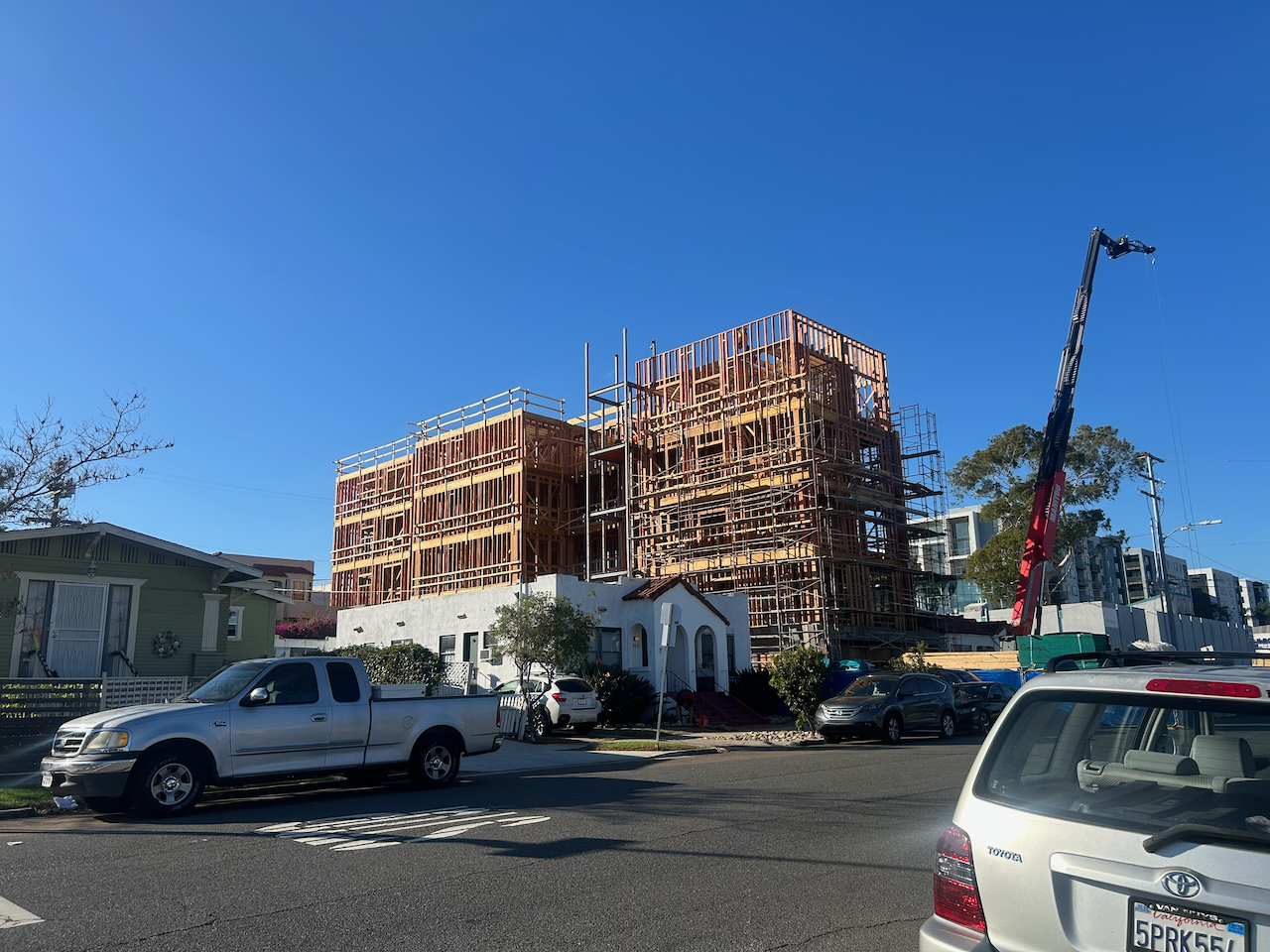Timeline of State and Local Incentives to Spur Housing Construction
Starting in 2019, both the State of California and the City of San Diego began implementing a variety of laws and building code changes to incentivize the local construction of new homes to meet state requirements for new housing. Following is a summary of key legislation at the state and local level.
State of California
2019: Starting in 2019, the California State Legislature passed a series of laws to streamline the construction of Accessory Dwelling Units (ADUs) and Junior Accessory Dwelling Units (JADUs) in zones that allow single-family and multifamily uses.
January 2022: Senate Bill (SB) 9, sponsored by State Senators Toni Atkins and Scott Weiner, requires a city to approve up to two new homes on a single-family zoned lot and/or splitting a single-family zoned lot into two lots about the same size. A project is not eligible under SB 9 if the property is historically designated or located within a historic district.
January 2022: Senate Bill (SB) 10, sponsored by State Senators Toni Atkins and Scott Weiner, is an "Opt-In" bill allowing a city or county to pass an ordinance to zone any single-family parcel for up to 10 residential units at a height specified by the ordinance. Parcels must be located in a transit-rich or jobs-rich area or on an urban infill site, all of which apply to University Heights.
City of San Diego
March 2019: the Municipal Code was revised to allow for the elimination of parking in multi-unit buildings within Transit Priority Areas (TPA) to reduce the cost of construction. TPAs include all parcels within ½ mile (as the crow flies) of a major transit stop. Virtually all of University Heights is located within a Transit Priority Area.
December 2019: the Inclusionary Housing Ordinance was amended to give developers the option of paying an in-lieu fee or providing at least 10% of the dwelling units in a new residential development at rates affordable to Low to Moderate income households.
December 2020: the Complete Communities Housing Solutions Regulations were added to the Municipal Code under the leadership of Mayor Kevin Faulconer. District 3 Councilmember Chris Ward voted in favor of the regulations. These regulations allow construction of a 6-8 story building without off-street parking within a Transit Priority Area if the development includes the appropriate number of dwelling units for Very Low-, Low- and Moderate-Income households, and has an underlying zoning of at least 20 dwelling units per acre. As shown in this map, much of University Heights is located within a Transit Priority Area and has a zoning of at least 20 dwelling units per acre, so is subject to the Complete Communities Program.
2022: the Housing Action Package was introduced in 2022 under the leadership of Mayor Todd Gloria. Housing Action Package 1.0 was approved in February 2022 and included new programs and code revisions to incentivize construction of new homes at all income levels.
2023: Housing Action Package 2.0 (HAP 2.0) was introduced to implement state law to allow the construction of more new homes near transit, provide protections to existing residents and increase the supply of land available for new home development. HAP 2.0 is scheduled for another Planning Commission meeting in August 2023 and then adoption by City Council.
February 2023: the City Council approved a plan to expand the area for building incentives from within ½ mile (as the crow flies) of transit stops to within 1 mile (walking distance). In these new Sustainable Development Areas (SDA), housing density incentives like the City's ADU Bonus Program and Complete Communities Program would be allowed in neighborhoods further away from transit stops than what's currently allowed. District 3 Councilmember Stephen Whitburn voted in favor of the Sustainable Development Areas.
Key Housing Legislation Affecting University Heights
Of the forgoing state and local laws, we believe the following could have the most impact on University Heights.
Complete Communities Housing Solutions
HAP 2.0 proposes certain refinements to Complete Communities Housing Solutions aimed at incentivizing the production of new homes for families of all sizes, including potential new incentives for homes with three or more bedrooms and moderate-income households.
Accessory Dwelling Unit (ADU) Density Bonus and Accessible ADU Programs
HAP 2.0 encourages the construction of Accessory Dwelling Units (ADUs) and Junior Accessory Dwelling Units (JADUs) by eliminating parking requirements and providing an affordable housing bonus of one additional ADU for every deed-restricted Low- and Very Low-Income ADU constructed on the premises.
ADUs would also be permitted in all zones allowing residential uses, and JADUs permitted in all Single Dwelling Unit Zones by-right (with only city staff review and no public input). Incentives are also proposed for ADA-accessible ADU homes.
Under state law, ADUs are currently allowed within a historic district and on lots where the primary residence is historically designated.
Missing Middle Regulations (Senate Bill 10)The City of San Diego’s proposed “Missing Middle Regulations” under HAP 2.0 are intended to implement Senate Bill 10 (described above) to allow up to 10 units per parcel in a transit rich area through a streamlined process.
The regulations do not apply to premises located within wetlands, very high fire severity zones, special flood hazard areas, hazardous waste sites, environmentally sensitive lands, or a historic district or on a premises that contains a designated historical resource as of January 1, 2023.
Affordable Housing Anti-Displacement Protection
HAP 2.0 would strengthen the City’s regulations to protect tenants who could be displaced by the construction of new homes.
What Does This Mean for University Heights?
In our opinion, the Complete Communities Housing Solutions program will potentially have the most negative impact on University Heights. As described above, these regulations allow construction of a 6-8 story building without off-street parking within a large swath of University Heights between Adams Avenue, University Avenue, Cleveland Avenue, and the 805 freeway.
There are already two unfortunate examples of the Complete Communities program in University Heights, both of which were ministerially approved and replaced older Craftsman homes. The 1925 Craftsman Bungalow at 4222 Georgia Street has been demolished and will be replaced by Georgia Modern with 5 stories, 31 units, and only 2 parking spaces.
The 1895 Folk Victorian cottage at 4350 Cleveland Avenue has been demolished and will be replaced by an 8-story building with 49 units. While most of the buildings on Cleveland Avenue have a maximum of 2 stories, the underlying zoning is 15 to 29 du/ac. This building will not only be very visible to and impact residents on Cleveland Avenue but also to residents of single-family homes on Maryland Street, just west of Cleveland.
Many homeowners are concerned about Senate Bill 10 which is proposed under HAP 2.0 and will come before the Planning Commission again in August 2023 before going to the City Council for final approval.
We believe that SB 10 will not have nearly the same impact on University Heights as Complete Communities. Close to 200 single-family homes in University Heights are historically designated or located within historic districts, and would not be eligible for development under SB 10.
Further, most of the single-family areas of University Heights is located within the Very High Fire Severity Zone where more stringent building codes must be followed in order to comply with SB 10. Insurance is also more difficult and costly to obtain in high fire hazard areas like much of San Diego.

